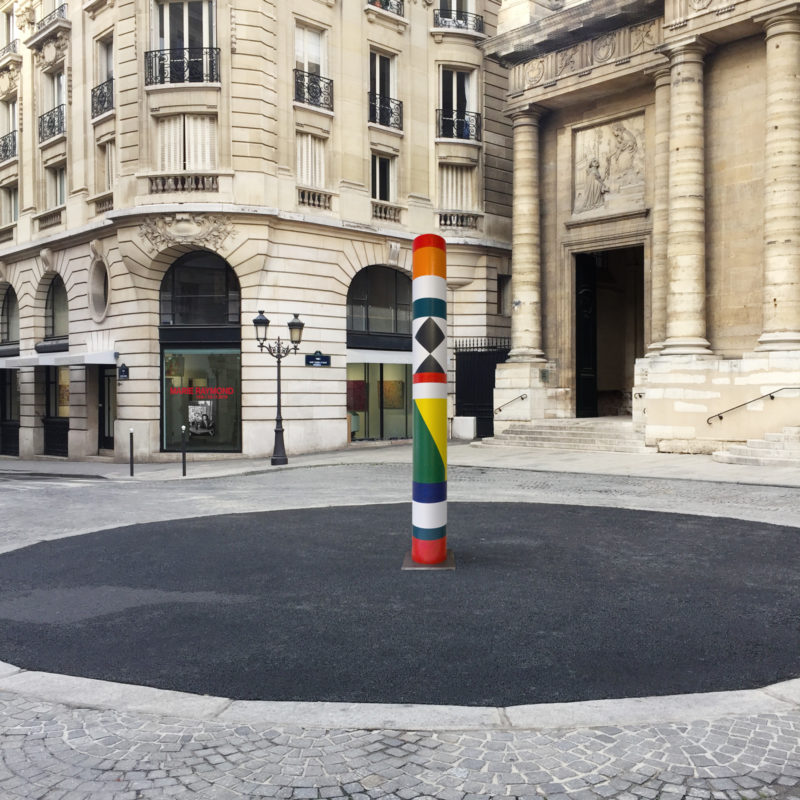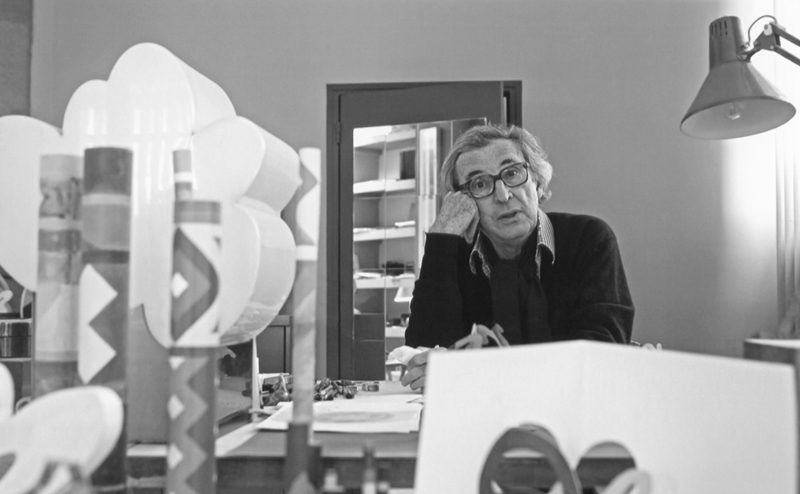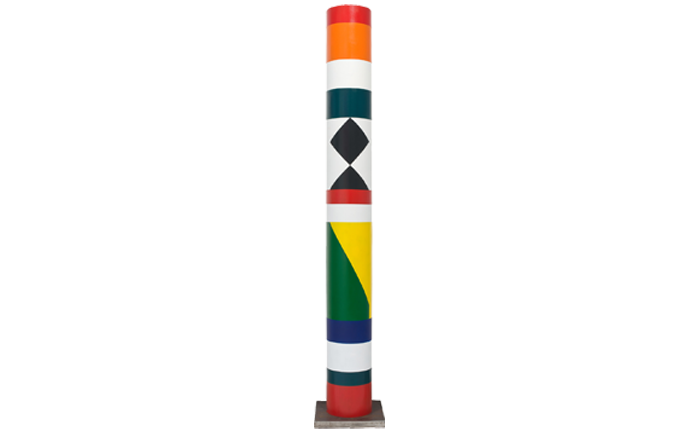Exhibition > October 19 – November 30, 2019
Palazzo Polignac, Venice
Rougemont : The column that Venice was missing
Rougemont has planted his columns all around the world; he took over the façade of the Paris Museum of Modern Art in 1974, dressing its pillars in coloured masks, he rhythmed the banks of the Seine in 1975 for the “open air sculpture museum” on quai Saint-Bernard between Pont de Sully and Pont d’Austerlitz. In Venice he could have once again considered the banks of the canals, the waterside, wanted to be seen from the boats.
On the contrary, this year he chose the secret of the inner courtyard of Palazzo Contarini-Polignac, the high culture residence next to the Ponte dell’Accademia. As wanted by Winaretta Singer-Polignac, this embassy of art and France has always welcomed artists, writers, musicians…Rougemont knows this. He is not impressed by the palazzo: it is like his holiday home in Venice and he enjoys coming here. He wanted to respond to its architecture with a column whose proportions are in harmony with this massive cube and its perfection, which already charmed Ruskin and inspired Gabriel Fauré and Reynaldo Hahn. The inside courtyard of Palazzo Polignac in the 20th century deserved to be called, like Piazza San Marco, the “drawing room of Europe” – but it remained secret, today it is opening.
When the two most famous columns in the world, the column of Saint Theodore killing his crocodile-shaped dragon and the Lion one arrived in Venice in 1172, the story of a third monument, a lost marble, immediately emerged. A column lost on the way, fallen during disembarkation, forgotten in the Greek islands, there are many versions of this Venetian legend; if the Venetians don’t like to walk between the two columns of Piazza San Marco, it is because of the public executions that took place there, but also because they know there was a third column, never erected elsewhere than in stories and conversations. Here it is, “the doge’s column”, hidden by Guy de Rougemont at the centre of this building which seems to have been built around it – a game of mirrors. The vanished column found, salvaged from the Venice lagoon, throws its shadow: it marks the artists’ time, like the gnomon of a sun dial.
Of Rimbaud’s “colour stakes” from the famous line in the Drunken Boat, Rougemont, who came here in a dark gondola, retained the range of colours. The palazzo’s façade is one of the large coloured surfaces of the Grand Canal and one of the most beautifully faded, with its marbles and bricks, its tiled roof, its porphyry cabochon. Rougemont doesn’t echo them, he chose red and orange for the top part of the totem, dark triangles and diamonds on a white background in the middle, the green and yellow movement of the stakes that line the canal for the base. Manet painted these stakes striped in pure colours. From the other bank, Monet painted the volume and reflections of Palazzo Polignac several times. Has Rougemont really looked at these two inspirations? To paint Venice, you must be able to escape. He saw, understood, forgot them. This Rougemont column was found in his work: it tells us about the artist’s archeology, exposes the buried strata of his creation and erects his totem like a trophy. He meditated it all in secret, before letting the public in – an essential dimension of the artist who dared to place his works on the side of autoroutes and on the esplanade of the Orsay Museum.
Rougemont, the innovator, loves classic art and dares to show it. At his last Paris exhibition, he showed large “museum formats”, using a very apt word to describe them with an ogre’s appetite: “my Sardanapalus”. The large Delacroix in the Louvre has obsessed him since childhood. Here, in front of this totem, object, sculpture, furniture item, painting, shadow and drawing at the same time, impossible not to mention another, less famous Delacroix, The Execution of Doge Marino Faliero, in London at the Wallace Collection. The large staircase of the Doges’ palace appears in white, the executioner’s profile stands out, the traitor’s head rolls in its blood. An in camera event in the midst of spectators. Within the palace, behind the walls, a drama unfolds, the most terrible in the history of the Most Serene Republic of Venice, but within the rules of a solid geometric construction. Rougemont’s column in the courtyard of Palazzo Polignac plays the role of the marble staircase of the doges’ palace in Delacroix: it structures the work, gives it force and mystery. From now on, for him, it will be a reference, a daymark for the sailor, an anchor-point at the centre of a beloved house.
Adrien Goetz





